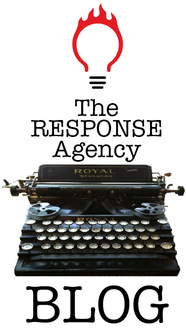Tips for creating a strong ad
Or at least for avoiding creating a recklessly weak one
Yesterday I had the pleasure of evaluating an ad placed by a favorite client’s competitor. In this case “evaluating” boiled down to “ripping to shreds.” The extemporaneous rip offers a not-bad primer. Enjoy.
1: Have a killer headline. (1a: Short of that, at least have a headline.) This ad was headless. Inexcusable! Readers use headlines to decide which ads deserve a closer look. Well-crafted headlines stop some perusers and leave an impression on those who move on. If you think that having no headline will make readers crazy with curiosity so they’ll read your copy to see what the ad is about, you’re naïve. Remove the headline, and you remove any reason for anyone to read more.
2. Be careful about putting color or images behind body copy. The copy was printed over a busy photo, reducing legibility. When that happens, most people move on. People will not work hard to read your stuff. (Do not confuse legibility with readability. The latter has to do with writing style, which I get to in 4 below.)
3. Fear not white space. In a sea of dense type, which publications tend to be, the intelligent use of white space draws eyes. No such luck here. The ad cluttered every square inch of the page, presenting a daunting block. Admittedly, densely laid-out ads are not de facto bad — many are quite successful — provided you have a compelling headline and copy that a reader cannot put down once she or he starts in. This ad had neither.
4. Say something of interest to your reader. People do not thumb through publications in hopes of finding and gobbling up your gratuitous fluff and empty boasts. Set aside what you want to say and address what readers care about. If you fail to engage them with crisp, relevant writing, you won’t lose them; you never had them.
—Steve Cuno
 RSS Feed
RSS Feed



